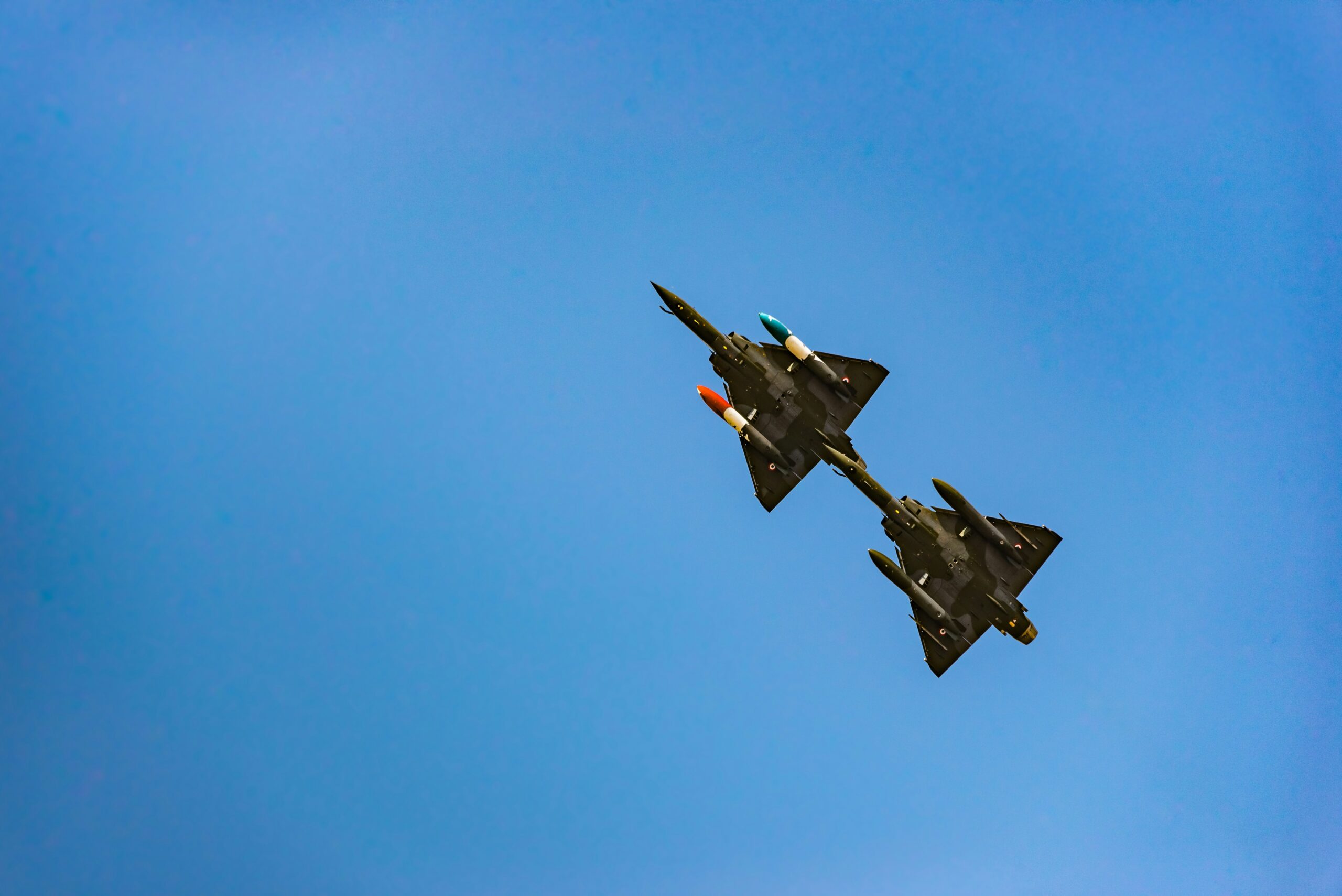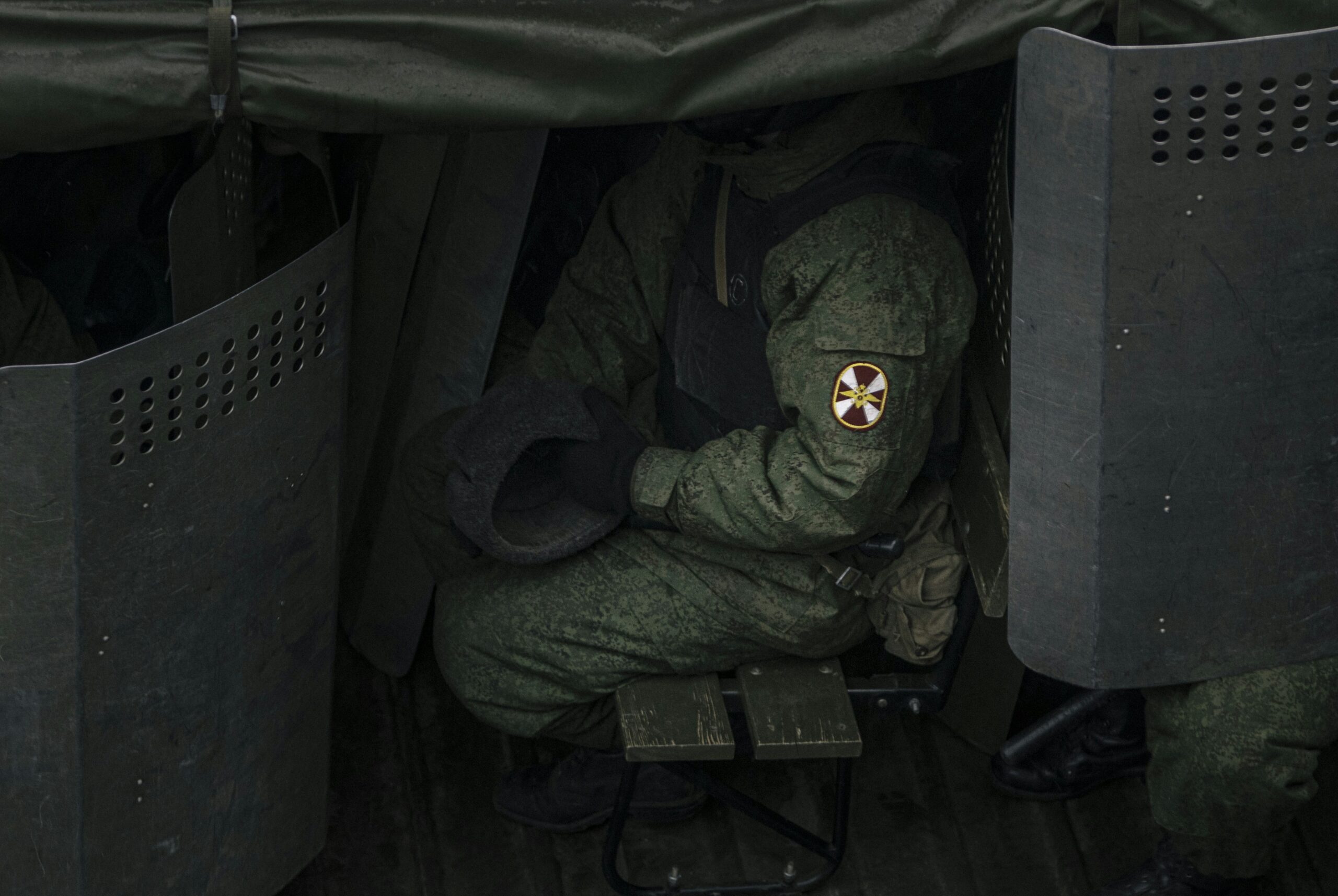In the world of military optics, laser rangefinders play a vital role in providing accurate distance measurements for targeting and reconnaissance. These innovative devices utilize laser technology to calculate the distance between the observer and the target, enabling military personnel to make precise aiming adjustments and assess potential threats. From enhancing the accuracy of snipers to aiding artillery teams in adjusting their aim, laser rangefinders have become indispensable tools in modern warfare, revolutionizing the way military operations are conducted.
Understanding Laser Rangefinders
Concept of Laser Rangefinders
Laser rangefinders are sophisticated devices used in various military operations to accurately determine the distance between the user and a target. These devices utilize laser technology to emit a laser beam towards the target, and by analyzing the reflection or the time taken for the beam to return, they provide highly precise distance measurements. Laser rangefinders have become an essential tool in military optics due to their ability to enhance targeting, navigation, and overall operational effectiveness.
Basic Operation of Laser Rangefinders
The fundamental operation of laser rangefinders involves the emission of a laser pulse or continuous wave towards the intended target. The rangefinder’s receiver then detects the reflected laser beam, and by measuring the time it takes for the beam to travel to the target and return, it calculates the distance. This process is enabled through advanced timing and measurement systems incorporated within the device. The accuracy of laser rangefinders is largely dependent on the quality and precision of these internal components.
Evolution of Laser Rangefinders
Over the years, laser rangefinders have undergone significant advancements in technology. From early infrared rangefinders to the modern pulse and continuous wave rangefinders, the evolution has been driven by the need for improved accuracy and functionality. The integration of laser rangefinders with other military optics systems, such as fire control systems, has further enhanced their capabilities and effectiveness on the battlefield. Continuous research and development continue to shape the future of laser rangefinders in military optics, ensuring their relevance and adaptability in modern warfare scenarios.
Role of Laser Rangefinders in Military Optics
Rangefinders for Positioning and Navigation
Laser rangefinders play a crucial role in military positioning and navigation. By precisely measuring the distance between the user and distinct landmarks or coordinates, they enable accurate mapping and positioning of troops. Whether in ground combat, naval operations, or aerial reconnaissance, laser rangefinders contribute to the formation of operational strategies and enhance overall situational awareness.
Rangefinders for Target Detection
One of the primary purposes of laser rangefinders in military optics is target detection. By determining the exact distance to a target, operators can evaluate its potential threat level and plan appropriate countermeasures. Laser rangefinders assist in identifying, tracking, and engaging hostile targets, minimizing collateral damage and maximizing mission success.
Rangefinders for Fire Control Systems
Laser rangefinders are an integral component of fire control systems in military vehicles and artillery. By accurately measuring the distance to a designated target, rangefinders provide essential data for adjusting the trajectory and aiming of munitions. This ensures precision and minimizes errors, ultimately improving the efficiency and effectiveness of military firepower on the battlefield.

Types of Laser Rangefinders Used in Military Optics
Infrared Rangefinders
Infrared rangefinders utilize infrared laser beams to measure distances. These rangefinders are often favored for their ability to operate in low light conditions, making them suitable for nighttime military operations. Infrared technology allows for excellent range and accuracy, enabling military personnel to effectively engage targets in challenging environments.
Pulse Rangefinders
Pulse rangefinders emit short-duration laser pulses and measure the time it takes for the pulse to return after reflecting off the target. This technique provides precise distance measurements, with accuracy typically within a few meters. The ability of pulse rangefinders to work effectively at longer distances and in various weather conditions makes them invaluable tools in military optics.
Continuous Wave Rangefinders
Continuous wave rangefinders emit a continuous laser beam and analyze the changes in the beam’s characteristics upon reflection. This analysis enables distance measurements based on the principles of interference and phase comparison. Continuous wave rangefinders offer excellent accuracy and stability, making them highly reliable in military applications that require consistent and precise measurements.
Functional Principle of Laser Rangefinders
Use of Light Waves for Measurements
Laser rangefinders utilize the fundamental properties of light waves to determine distances accurately. By emitting a laser beam and analyzing its reflection, these devices leverage the speed of light to calculate the time it takes for the beam to travel to the target and return. This principle forms the foundation of laser rangefinders’ ability to provide precise distance measurements in military optics.
Time of Flight Principle
The time-of-flight principle is a key functional principle of laser rangefinders. It involves measuring the time it takes for a laser pulse or continuous wave to travel to the target and back. By accurately measuring this time interval, the rangefinder calculates the distance based on the known speed of light. This principle allows for high levels of accuracy and reliability in distance measurement.
Phase Comparison Method
The phase comparison method is employed by some laser rangefinders to measure distances. This method involves analyzing the phase shift of a continuous laser beam after it reflects off the target. By comparing this phase shift to a reference, the rangefinder can calculate the distance based on the wavelength of the laser beam. The phase comparison method offers excellent accuracy and stability, contributing to the overall effectiveness of laser rangefinders in military optics.

Advantages of Laser Rangefinders in Military Optics
Accuracy in Distance Measurements
Laser rangefinders are renowned for their exceptional accuracy in distance measurements. Their ability to provide precise readings, often within a few meters or less, allows military personnel to make informed decisions regarding target engagement, navigation, and positioning. This accuracy contributes significantly to mission success and reduces the risk of collateral damage.
Operational Efficiency
The integration of laser rangefinders in military optics significantly enhances operational efficiency. By allowing rapid and accurate distance measurements, these devices facilitate quick decision-making and target acquisition. This efficiency is especially critical in time-sensitive scenarios where split-second decisions can greatly impact the outcome of a military operation.
Reduced Risk of Detection
Laser rangefinders offer the advantage of reduced risk of detection compared to other distance measuring devices, such as radar systems. The use of laser beams for distance measurement minimizes the chances of being detected by enemy electronic warfare systems. This stealth capability provides military personnel with a tactical advantage, allowing them to maintain a higher level of covert operations and surprise on the battlefield.
Limitations of Laser Rangefinders in Military Optics
Influence of Environmental Conditions
Laser rangefinders are susceptible to the influence of environmental conditions. Factors such as fog, rain, dust, and smoke can affect the performance and accuracy of these devices. The laser beam may scatter or be absorbed by particles in the air, leading to reduced range and compromised measurements. Military personnel must be aware of these limitations and adapt their strategies accordingly when using laser rangefinders in challenging environments.
Limitations in Detecting Non-Reflective Targets
Laser rangefinders rely on measuring the reflection of laser beams off the target. This means that non-reflective or low-reflective surfaces may pose challenges for accurate distance measurements. Camouflaged targets, irregular surfaces, or objects with materials that absorb or scatter laser beams can result in erroneous readings or difficulty in target detection. Military operators must consider these limitations when relying on laser rangefinders for target acquisition.
Risk of Interference
Interference from other laser sources can pose a risk to the proper functioning of laser rangefinders. If laser beams from different sources intersect or overlap, the rangefinder may receive mixed signals, leading to inaccurate measurements or malfunctions. Adequate precautions and laser safety protocols must be followed to minimize the risk of interference, ensuring the integrity and reliability of laser rangefinder operations in military optics.

Laser Rangefinders Vs. Other Distance Measuring Devices
Comparison with Radar Systems
In comparison to radar systems, laser rangefinders offer several advantages in military optics. Laser rangefinders provide higher accuracy and resolution, enabling more precise distance measurements. They also tend to be smaller and more portable, making them suitable for individual soldiers or small units. Additionally, laser beams are less likely to be detected by enemy radar warning systems, providing a stealth advantage on the battlefield.
Comparison with Ultrasonic Sensors
When compared to ultrasonic sensors, laser rangefinders excel in terms of accuracy and range. Ultrasonic sensors emit sound waves that can be affected by various environmental factors, resulting in reduced accuracy. Laser rangefinders, on the other hand, utilize light waves that travel at a constant speed and are less affected by external elements. This allows laser rangefinders to deliver superior distance measurements in military operations.
Comparison with Optical Rangefinders
Optical rangefinders, such as binoculars with rangefinding capabilities, offer simplicity and ease of use. However, they generally have limited range and lower accuracy compared to laser rangefinders. Optical rangefinders rely on manual estimation or measurement techniques, which can be prone to human error. Laser rangefinders provide automated and precise distance measurements, making them a preferred choice in military optics for their reliability and efficiency.
Applications of Laser Rangefinders in Different Military Operations
Use in Ground Combat
In ground combat operations, laser rangefinders are indispensable tools for infantry units, snipers, and artillery personnel. They provide accurate distance measurements for effective target engagement and precision artillery fire. Laser rangefinders enable infantry units to establish situational awareness, determine optimal firing positions, and plan tactical maneuvers. Their use significantly enhances operational effectiveness and minimizes the risk of friendly fire incidents.
Use in Naval Operations
Laser rangefinders find extensive applications in naval operations, ranging from maritime surveillance to naval artillery targeting. The ability to accurately measure distances in varying weather conditions and over large bodies of water enables naval vessels to maintain optimal ranges for targeting and engagement. Laser rangefinders also contribute to navigational accuracy and collision avoidance, enhancing the safety of naval operations.
Use in Aerial Reconnaissance
In aerial reconnaissance, laser rangefinders support intelligence gathering, target identification, and mission planning. By providing accurate distance measurements, they aid in determining the size, location, and potential threat level of targets. Laser rangefinders enable aerial reconnaissance units to assess target vulnerabilities, plan optimal flight paths, and provide valuable information for subsequent air operations.
Future Prospects of Laser Rangefinders in Military Optics
Development of Advanced Rangefinders
The future of laser rangefinders in military optics lies in the continuous development of advanced technologies. Ongoing research and innovation aim to enhance accuracy, range, and functionality. Improved sensor integration, enhanced target identification capabilities, and reduced sensitivity to environmental conditions are among the areas of focus. Advanced rangefinders with increased precision and adaptability will play a significant role in the future of military operations.
Potential Applications in Unmanned Aerial Vehicle (UAV) Technology
Laser rangefinders have immense potential in the field of unmanned aerial vehicle (UAV) technology. By integrating laser rangefinders with UAVs, military forces can benefit from enhanced reconnaissance capabilities, precise target acquisition, and efficient delivery of munitions. UAVs equipped with laser rangefinders can navigate and operate autonomously while providing real-time battlefield intelligence, expanding the possibilities for future military operations.
Role in Modern Warfare Strategies
As modern warfare continues to evolve, laser rangefinders will play a crucial role in shaping military strategies. The ability to accurately measure distances and effectively engage targets will remain essential. Laser rangefinders will contribute to the precision and efficiency of autonomous weapon systems, unmanned platforms, and networked battlefield capabilities. Their integration with other advanced military optics technologies will further enhance the effectiveness of modern warfare strategies.
Safety Measures in Using Laser Rangefinders
Protection Against Laser Eye Injuries
Safety measures are paramount when using laser rangefinders in military optics. Laser beams can cause permanent eye damage if directly exposed. Proper training, the use of laser safety goggles, and adherence to established safety protocols are essential to prevent laser eye injuries. Military personnel must be educated about the risks associated with laser rangefinders and take necessary precautions to ensure their own safety and the safety of others.
Regulations on Laser Power
There are regulations in place to control the power emitted by laser rangefinders. These regulations limit the power output to levels deemed safe for human exposure. Compliance with these regulations ensures that laser rangefinders used in military optics are within acceptable safety thresholds. Attention to these regulations and the use of reliable and compliant laser rangefinders contribute to the overall safety of military personnel.
Procedures for Safe Operation
Safe operation procedures are vital for preventing accidents and minimizing risks associated with laser rangefinders. Adequate training and familiarization with the specific model of laser rangefinder being used are essential. Proper handling, correct alignment, and avoiding direct exposure are among the practices that must be followed. Adhering to established procedures helps maintain a safe working environment and promotes responsible use of laser rangefinders in military optics.
In conclusion, laser rangefinders play a critical role in military optics, offering highly accurate distance measurements that enhance various aspects of military operations. From target detection and fire control systems to positioning and navigation, laser rangefinders provide valuable data that contributes to mission success and operational efficiency. Despite limitations related to environmental conditions and non-reflective targets, laser rangefinders offer distinct advantages over other distance measuring devices such as radar systems, ultrasonic sensors, and optical rangefinders. As technology advances, the future of laser rangefinders in military optics holds promising opportunities, including the development of advanced rangefinders, integration with UAV technology, and their continued role in shaping modern warfare strategies. However, safety is of utmost importance when using laser rangefinders, with measures in place to protect against laser eye injuries, adherence to laser power regulations, and the implementation of proper operating procedures. With their unparalleled accuracy and versatility, laser rangefinders remain indispensable tools for any military operation.
